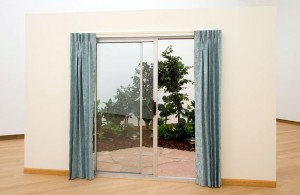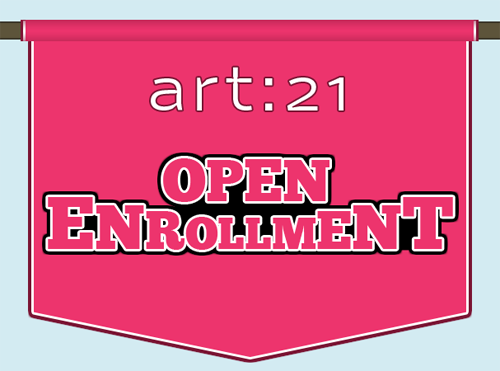This week began with Dean Rochelle Steiner of the USC Roski School of Fine Arts signing off on my thesis and me paying the publishing and binding fee. My thesis is officially complete! The other component of the program is a co-curated student exhibition… more on this and how it can serve as a model for a reality show in an upcoming post. Anyway, as graduation nears, the exhaustive question, “What do you plan to do next?” has began to rear its ugly head and is typically met with some of my performatively ambivalent responses:
“Nothing.”
“Go to med school.”
and a heavy favorite, “Not become a curator.”
Given the atmosphere of anxiety among those in my cohort, our graduation date of Friday the 13th of May seems appropriate. But in all seriousness, at the present moment I’m exhausted and currently trying to leave the mental head space of my thesis (for those wondering, it was on feminist art critical methodologies and social practice — that is as much of an elaboration on it that I can muster right now). The question of “What to do next?” also brings forward the where component. I expect that out of the 12 graduates of my program this year, at least 2/3 of us will stay in Los Angeles. Matriculation in a Los Angeles graduate level art program (as is the case elsewhere, I’m sure) is as much a measure of your accomplishments as it is a test of your networking abilities so to me, it seems improbable to pack up and leave right now.
There’s no doubt about it; Los Angeles is a weird place. This means a lot coming from someone that grew up the circus of Las Vegas. For the most part, Los Angeles has maintained the “something big is about to happen” feeling for a long time in regards to art. This isn’t to assert that nothing is happening here but the inescapable feeling of longing is prevalent. Perhaps this has something to do with what Norman Klein, in his excellent book The History of Forgetting: Los Angeles and the Erasure of Memory, would describe as a series of distractions or conflicting narratives that cause the perpetual “rebranding” of identity and ultimately, construct most of Los Angeles’s myths. With the high concentration of art schools, museums, galleries, and significant growth of artist-run spaces, collectives, and activism, you’d think that the longstanding narrative of LA “establishing” itself as a significant contemporary art center will have made the transition from “establishing” to “established.”
However, just this week, the Los Angeles Times released an article about low attendance in LA museums. Only two LA institutions were ranked among an international survey in the Art Newspaper listing the top 100 museums based on attendance. While I’m always skeptical about how this data is collected and even more so if the value of exhibitions is assessed purely on numbers, nonetheless, it’s interesting that only the Los Angeles County Museum of Art (LACMA) and the Getty Center made the list. Curiously, both the Museum of Contemporary Art (MOCA) and UCLA’s Hammer Museum didn’t rank at all, despite both institutions dramatically shifting their programming in the last couple of years to appeal to younger audiences.
The bid for maintaining a steady flow of young crowds is perhaps best evidenced by MOCA’s upcoming Art in the Streets exhibition. Rumor has it that since NYC-based art dealer and gallery owner Jeffrey Deitch came to MOCA as its new director, appointed after cultural philanthropist and property investor Eli Broad’s art foundation saved the nearly bankrupt institution with a $30 million matched donation in 2009, his first order of business was booting the planned retrospective of California Institute for the Arts (CalArts) alum, conceptual artist Jack Goldstein. Instead, he fast-tracked the Art in the Streets exhibition, scheduled to open on April 11 and featuring work by many national and internationally known street artists lauded by Deitch. This, of course, was met with its own stream of controversy back in December, when Deitch ordered the whitewashing of a commissioned mural by the Italian street artist Blu. The unfortunate timing of this incident coincided with the whirlwind of controversy surrounding the National Portrait Gallery in Washington DC’s removal of David Wojnarowicz’s “Fire in My Belly” video from the Hide/Seek exhibition. Both instances are widely different, one an ideological sneak attack from a fringe member of the conservative right and the other, a bizarre administrative oversight. Deitch OK’d the mural without reviewing the proposal and after returning from Art Basel in Miami, he found the imagery of caskets with dollar bills draped over them to be potentially offensive to the surrounding neighborhood of Little Tokyo, as the wall faces the same direction as a WWII Japanese memorial. (The Jack Goldstein retrospective has since been picked up by the Orange County Museum of Art and will open in 2012.)
There has been much apprehension about the form of rebranding MOCA will undergo since Deitch arrived in Los Angeles. Some say his aesthetic sensibilities and obvious affinity for pop culture will make MOCA more accessible to a wider audience but at the expense of its obligation as a cultural institution to provide locals and tourists with a place to experience work representative of Los Angeles’s rich art history, particularly in conceptualism, minimalism, and performance. But we can’t forget the curators, right? Curator Bennett Simpson (also a faculty member in my program at USC) brought the William Leavitt: Theater Objects show to MOCA, the LA-based artist’s first solo exhibition, open now until July 3, 2011. Leavitt’s work embodies a so-called “California aesthetic,” its installations reminiscent of Malibu homes in the 90s, with a Joan Didion-esque “melancholy in the sun” feeling emanating from them. It is certainly interesting and maybe, truly representative of Los Angeles to have such contrasting exhibitions like William Leavitt: Theater Objects and Art in the Streets in the same museum. Maybe Los Angeles’s identity is inherently one of contradiction that has yet to be embraced.

William Leavitt, "California Patio," 1972. Mixed media (artificial plants, Malibu lights, flagstone, slider, curtains, wooden wall, and text), 96 x 144 x 96 in. Collection Stedelijk Museum, Amsterdam. Credit: Museum of Contemporary Art, Los Angeles.
It’s also worth noting that the feeling of Los Angeles’s perennial transitory state has been undertaken by the Getty Research Institute (GRI). In October of this year, the GRI is launching a citywide series of exhibitions and other projects across many of Southern California’s arts colleges, museums, galleries and libraries, called Pacific Standard Time: Art in L.A. 1945-1980. This initiative will, perhaps, through enlivening the city’s cultural history, propel Los Angeles beyond its transitory stage and establish it concretely, embracing its contradictions. Or maybe it won’t at all. Only time will tell but in any case, it certainly feels like something big is about to happen.






Pingback: Open Enrollment | On the Precipice of Reality: This and That | Art21 Blog